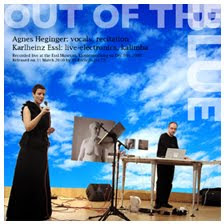Ecco la prima parte di Traiettoria, le altre essendo Dialoghi e Contrasti, di Marco Stroppa.
Note di programma
Traiettoria per pianoforte e suoni generati al computer è un ciclo di tre pezzi Traiettoria…deviata, Dialoghi, Contrasti, composta tra il 1982 e 1984 e della durata di circa 45′.
Traiettoria può essere considerato come un concerto per pianoforte e orchestra, dove i suoni sintetici sostituiscono l’orchestra. In questo lavoro, il rapporto tra suoni sintetici e suoni concreti del pianoforte a volte è progettato in modo che si fondano in un’unica immagine e sensazione. Timbri inarmonici e armonia, in altre parole, “illusione” e realtà, tendono spesso a fondersi e trasformarsi l’una nell’altra.
La disposizione del pianoforte e del dispositivo di amplificazione è stata studiata con molta attenzione. I suoni sintetici provengono sia da un altoparlante posizionato sotto il piano che interferisce con la tavola armonica e le corde, sia da più altoparlanti disposti intorno al pubblico. A seconda alla soluzione scelta il volume del suono è ridotto oppure circonda il pubblico da tutti i lati in un impulso costante per tutto il pezzo. Per ragioni di equilibrio anche il pianoforte è amplificato.
La regia sonora di Traiettoria in concerto serve a modellare il suono sintetico in base alla partitura e alle caratteristiche acustiche della sala. Deve essere assicurata da un musicista la cui importanza è pari a quella del pianista.

 Agnes Heginger, soprano e Karlheinz Essl, elettronico, hanno registrato poco meno di un anno fa, all’Essl Museum in Vienna, questo disco, dal titolo Out of the Blue.
Agnes Heginger, soprano e Karlheinz Essl, elettronico, hanno registrato poco meno di un anno fa, all’Essl Museum in Vienna, questo disco, dal titolo Out of the Blue.